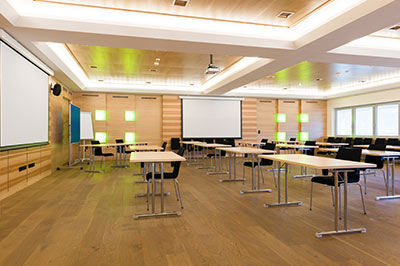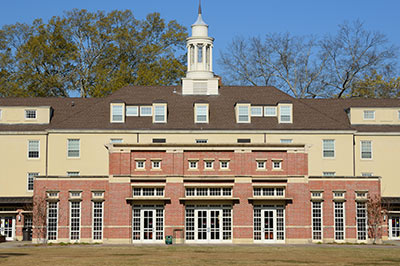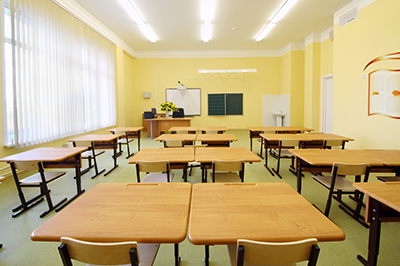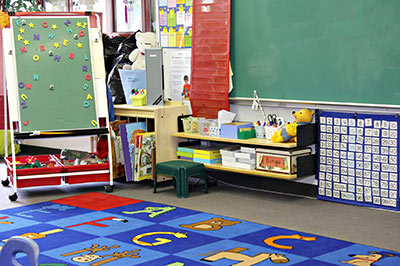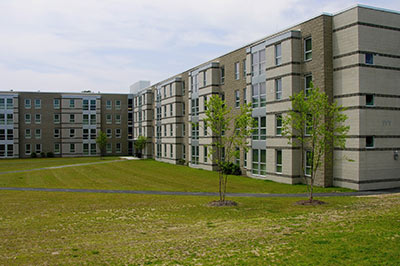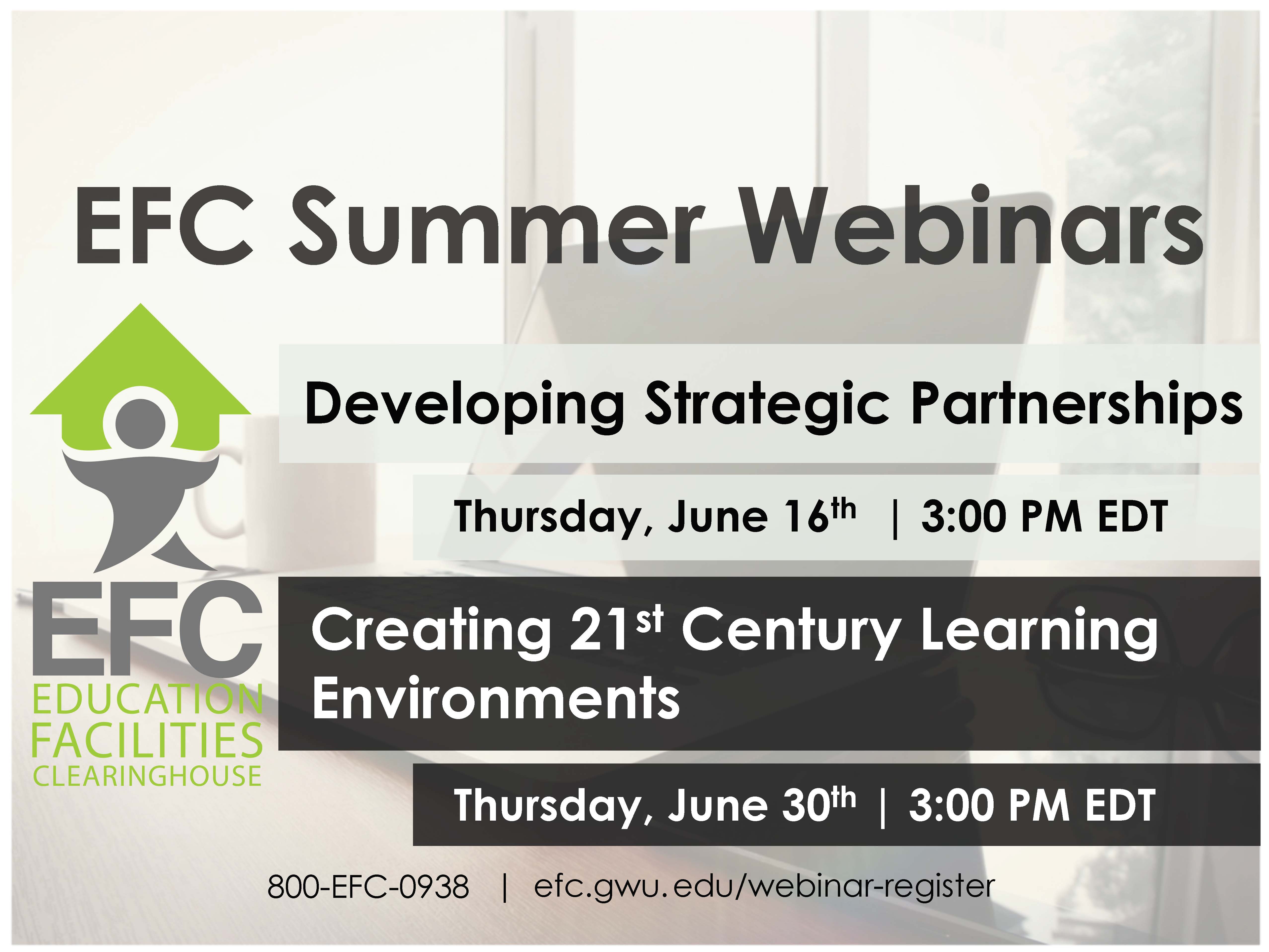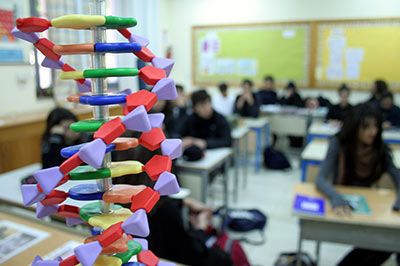Author: campus
The Energy & Environmental Management Plan
The Smart School Siting Tool User Guide
Environmental Protection Agency (2015)
School locations and community development are inextricably linked. School locations affect community land use patterns and infrastructure needs. Local land use, the location and capacity of road and utility networks, and community investments in economic development, housing, and other social programs affect school surroundings and learning environments. Taken together, school siting and other community decisions influence housing and transportation choices, neighborhood vitality, economic development, costs of community services, environmental quality, and overall community health and well-being.
Planning for 21st Century Learning Spaces
T. R. Dunlap
Conversations on the development of 21st century learning spaces highlight the important role of planning in creating environments that maximize student learning. School systems across our nation routinely develop multiple types of plans—strategic plans, site-based plans, school improvement plans, capital improvement plans, and short-term planning initiatives. Planning is a crucial element for the success of any school system, and careful planning for flexible, innovative, and effective classrooms is imperative.
There are many important components in developing effective plans: beliefs, mission, parameters, strengths, weaknesses, organizational design, competition, external analysis, critical issues, objectives, strategies, and priority actions (Cook, 2001). As educational planners consider 21st century learning environments, they must remember that these spaces are instrumental in carrying forward the values and purposes of the community and district. Educational planning does have its challenges: inadequate funding, lack of commitment, and the inflexible nature of plans (Hambright & Diamantes, 2004). However, where plans are thoughtfully designed and carefully implemented, students, parents, teachers, and school leaders see numerous positive effects.
Many in the education sector would identify 21st century learning spaces as a planning priority for school systems. While districts devote great energy in developing high quality plans, the particulars of classroom design are often left to the site-based plans of individual schools. We know that the quality of a site-based plan can lead to positive implementation outcomes (Strunk, Marsh, Bush-Mecenas, & Duque, 2016). Consequently, planning for 21st century learning spaces must be a priority in our carefully crafted site-based plans. Planning for 21st century learning spaces must incorporate a number of considerations, especially the instructional aims of teachers.
Creating effective 21st century learning spaces that support a wide-range of instructional practices requires a great deal of foresight, deliberation, and action. We must look at what teachers are doing (or want to do) in their instructional spaces and design or retrofit classrooms to accommodate these teaching strategies. Many instructional options today are dependent on spaces such as outdoor classrooms, makerspaces, and multipurpose rooms. Teachers rely on access to technology, and they should be able to arrange their spaces in numerous configurations to support their instruction. Therefore, educational planners must consider the number of instructional approaches teachers utilize when developing facility plans for districts and schools. Ultimately, our purpose for developing 21st century learning spaces is to impact positively learning outcomes for students.
Schools have a tremendous opportunity to demonstrate a commitment to developing learning spaces that support the many needs of students and teachers. Accordingly, the need to develop 21st century learning spaces in a school’s planning process should not be ignored.
References:
Cook, W. J. (2000). Strategics: the art and science of holistic strategy. Westport, Conn.: Quorum Books.
Hambright, G., & Diamantes, T. (2004). Definitions, Benefits, and Barriers of K-12 Educational Strategic Planning. Journal of Instructional Psychology, 31(3), 233–239.
Strunk, K. O., Marsh, J. A., Bush-Mecenas, S. C., & Duque, M. R. (2016). The Best Laid Plans An Examination of School Plan Quality and Implementation in a School Improvement Initiative. Educational Administration Quarterly, 52(2), 259–309.
T. R. Dunlap is a research associate for the George Washington University in the Education Facilities Clearinghouse. After having worked as a foreign language educator, he now researches topics relevant to education facilities and their improvements.
University of Rochester plans residence hall for first-year students
American School and University, 2016
The University of Rochester will begin construction this summer on a 72,000-square-foot residence hall.
The building, scheduled to open on the Rochester, N.Y., campus in 2017, has been designed to accommodate 151 first-year students and will integrate academics, athletics, and student life into the residential experience, the university says.
The main level of the facility will be dedicated to academic and student life services. This space will include meeting rooms for study groups and workshops, and offices that will be available for health professions, as well as career, academic, fellowship and STEM advising.
Colorado districts look to spend millions upgrading classroom locks
American School and University, 2016
Colorado school districts looking to bolster security are planning to spend millions of dollars upgrading locks on classroom doors.
The Denver Post says the districts need the equipment retrofits to comply with an updated Colorado Division of Fire and Prevention Control code requirement that that calls for public, charter and junior colleges to have locks in designated classrooms that can be locked from the inside.
ESSA and Equitable Early Learning Facilities
by Angel Ford, EdD
U.S. Secretary of Education John King wants equity emphasized as ESSA (the Every Student Succeeds Act) is implemented. ESSA is intended to increase funding and access to early learning programs. Improved access to early learning and King’s desire for equity go well together well. Evidence is plentiful that children who participate in high-quality preschool programs have better outcomes compared to children who do not have this opportunity (ED, 2015). It is also well established that not all preschool aged children have access to programs, therefore access is definitely not equitable (ED, 2015).
Currently only 41% of children are attending publicly funded preschool (ED, 2015). Sure, some families choose to keep these young children at home or place them in private establishments, but a significant number simply do not have access (ED, 2015). Even though ESSA may not address directly the facilities in which early learning takes place, these spaces are important to consider when discussing early learning programs.
First, we could ask: Are some schools not offering preschool because they don’t have adequate space to accommodate an early learning program? Second, for those schools that “make do” or house the preschoolers in standard traditional classrooms we could ask: Do these learning spaces place restrictions on instruction and large motor skill development activities because the original design was for lecture based instruction? Equitable early learning programs need to be housed in appropriate spaces, and, furthermore, the design and condition of these early learning spaces matter!
In a number of my past blogs, I have highlighted the inequities of school building conditions and the opportunity gaps these disparities create for students. In this blog, I would like to expound on this idea by adding to the conversation the condition of the spaces in which early learning takes place. Evidence shows a link between the quality of the learning spaces and the quality of the preschool programs (Arthur, Larson, Gillman & Sussman, 2006), and popular child development specialists such as Piaget and Montessori emphasized the importance of the physical learning spaces of preschoolers (Acer, Gözen, Fırat, Kefeli, & Aslan, 2016). Early learning spaces that are not designed and maintained specifically with best practices in mind could have elements that distract the students either emotionally or cognitively, causing them to be less able to concentrate on the learning processes in which the educators are trying to engage them (Arndt, 2012).
For now, I will just state that the physical learning spaces in which our youngest students attend should be designed or renovated in such a way to provide the best possible environment for these early learners. Learning spaces that are designed or redesigned to meet the needs of preschoolers can have a positive effect on their development and success (Acer et al., 2016). Specific examples of appropriately designed learning spaces will not be provided here, but may be discussed in future blogs. As ESSA increases funding for early childhood education, contemplations should take place about best-built environments. Less fortunate preschoolers should not have to attend dirty, ill-equipped, run-down buildings that may not have been created for such use, while more fortunate preschoolers are able to attend beautiful, clean, and well-resourced centers.
I am not suggesting that the physical environment should be the only focus, as the qualification of the teachers, the effectiveness of the curriculum, and other factors, play critical roles. What I am suggesting is that if we do not consider also the physical learning environments, an important part of the equation is being left out. The places where preschool students learn is one important variable that cannot be overlooked when establishing and expanding early learning education across the nation.
References
Acer, D., Gözen, G., Fırat, Z. S., Kefeli, H., and Aslan, B. (2016). Effects of a redesigned classroom on play behaviour among preschool children. Early Child Development and Care, 1-18.
Arndt, P. A. (2012). Design of learning spaces: Emotional and cognitive effects of learning environments in relation to child development. Mind, Brain, and Education, 6(1), 41-48.
United States Department of Education (ED). (2015). A matter of equity: Preschool in America.
Dr. Angel Ford is a research associate with Education Facilities Clearinghouse (EFC). Dr. Ford has previous experience working as a middle/high school administrator and actively participates in research and content management of the EFC website.
Selecting and Siting K-‐12 Schools in a Community
David Henebry, AIA NCARB ALEP, 2016
The traditional process of locating schools has consisted simply of mapping attendance areas and meeting with realtors to discuss and choose an available property. Today, however, due to a stronger understanding of the socioeconomic impacts of the development of schools on communities, there is a desire to explore a smarter approach to identify sites for schools. The objective of this essay is to provide a comprehensive, long-term strategic approach for siting schools in growing communities. Now that we have a stronger understanding of the socioeconomic impacts of development on communities, we want to explore a smarter approach to identifying sites for schools. This paper is focused on a comprehensive long term strategic approach to identifying sites for schools in growing communities.
EFC’s Summer Webinars
The Education Facilities Clearinghouse is holding two webinars this month that you will not want to miss. The EFC has made a number of national presentations on important topics facing public schools and universities. This month, we are offering these trainings to our many website users at no cost. Mark your calendars for these important events.
Join us Thursday, June 16th at 3:00 PM EDT for an important online workshop, Developing Strategic Partnerships. Current education research has shown that community partnerships help to improve student achievement, health, and transitions to higher education. However, many districts and schools have difficulty in developing strong, sustainable partnerships with community members. In this webinar, we will show how you can use your school facility to create and enhance relationships with your community, and we will discuss how these partnerships can revolutionize your school.
We also hope to see you Thursday, June 30th at 3:00 PM EDT for the webinar Creating the 21st Century Learning Environments. K-12 education is currently undergoing revitalization and emerging teaching and learning models are pushing the boundaries of traditional conceptualizations of the classroom. Parents, teachers, administrators, and researchers are increasingly concerned with this question: What does the 21st century classroom look like? This webinar will explore the latest trends in education research and discuss how emerging instructional practices are changing how we think of learning spaces.
Register below to participate in these webinars, and we will contact you with further details. See you soon!
The Relationship Between Science Classroom Facility Conditions and Ninth Grade Students’ Attitudes Toward Science
Ford, 2016
Over half of the school facilities in America are in poor condition. Unsatisfactory school facilities have a negative impact on teaching and learning. The purpose of this correlational study was to identify the relationship between high school science teachers’ perceptions of the school science environment (instructional equipment, demonstration equipment, and physical facilities) and ninth grade students’ attitudes about science through their expressed enjoyment of science, importance of time spent on science, and boredom with science. A sample of 11,523 cases was extracted, after a process of data mining, from a databank of over 24,000 nationally representative ninth graders located throughout the United States. The instrument used to survey these students was part of the High School Longitudinal Study of 2009 (HSLS:2009). The research design was multiple linear regression. The results showed a significant relationship between the science classroom conditions and students’ attitudes. Demonstration equipment and physical facilities were the best predictors of effects on students’ attitudes. Conclusions based on this study and recommendations for future research are made.



